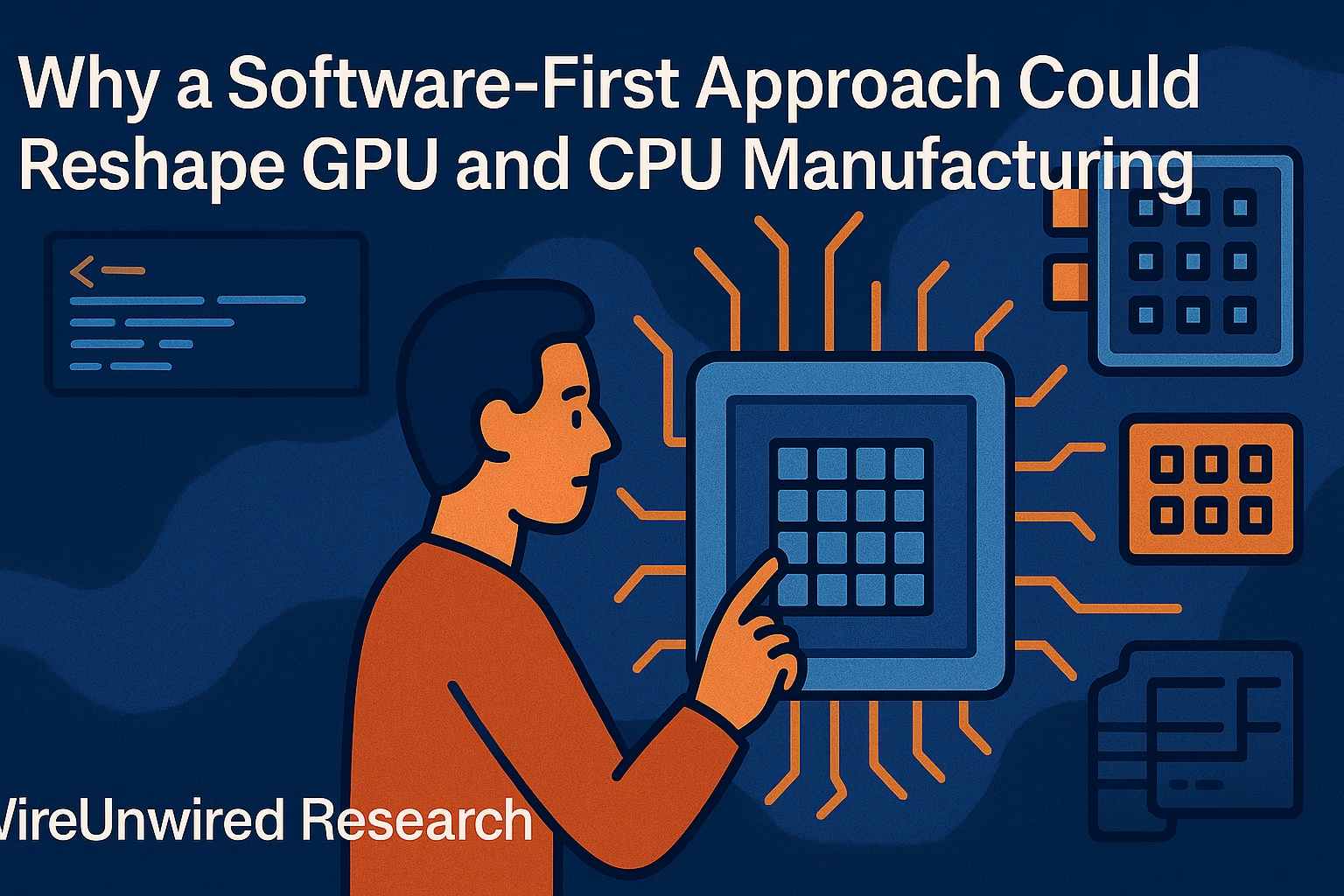The semiconductor industry has been in a state of near-constant evolution. Over decades, we’ve shrunk transistors, redefined architectures, and ridden the relentless rhythm of Moore’s Law. Yet one thing has barely changed: the way chips are developed. Hardware first. Software later. Always in that order.
In 2025, that status quo is under pressure. Slowing transistor gains, fast-changing AI workloads, and the demands of hyperscalers are breaking the old cycle. A new approach — software first design approach for GPUs and CPUs — is quietly challenging the industry’s most sacred process.
From GPU startups like Oxmiq Labs to giants like NVIDIA and Apple, the players betting on software first approach aren’t just tweaking a workflow. They’re rewriting the rules of processor development — and possibly, the next chapter of semiconductor history.
Why Hardware First Is Losing Ground in CPU and GPU Design
In the years ahead, the fastest GPU or CPU won’t necessarily be the one with the highest transistor count — it will be the one engineered to match its workloads from day one. And this is exactly where the hardware first model is beginning to show its cracks.
Traditionally, the sequence was fixed: finalise the architecture, send it to fabrication, and then let the software ecosystem catch up. This made perfect sense when Moore’s Law delivered predictable gains and software needs evolved more slowly. But now, I believe that sequence is effectively reversing — and the software-first approach for GPUs and CPUs is starting to gain a decisive edge.
According to my analysis, three forces are reshaping the cycle:
Slower hardware scaling — Gains in transistor density no longer translate into proportional speedups.
Rapidly evolving workloads — AI, generative models, and HPC demands are outpacing multi-year silicon design cycles.
Software bottlenecks — Even the most advanced chips can underperform without launch-day-optimised compilers, drivers, and frameworks.
The risks of misalignment are real. Intel’s Itanium, with its ambitious instruction set, shipped before developers were ready — leading to years of underuse and lost momentum. In today’s compressed product cycles, that kind of misstep can be fatal. Based on market data, I estimate that a single quarter’s delay in a flagship launch can wipe out 5–8% of projected annual revenue for major chipmakers. That’s a hit few can absorb without long-term consequences.
Join Our WhatsApp Community.
The Case for Software First Approach — and Who’s Leading the Shift
Starting with software doesn’t just flip the development order — it addresses some of the most persistent pitfalls in chip launches. By designing compilers, drivers, and core workloads first, manufacturers can shape hardware to match real-world needs instead of betting on assumptions.
The result? Less wasted silicon, shorter design cycles, and chips that deliver near-peak performance from day one instead of waiting months for the ecosystem to catch up.
Well ,this shift isn’t happening in a vacuum. AI training demands, generative model deployment, and edge computing workloads now evolve on timelines measured in months, not years. Hyperscalers like AWS, Google, and Microsoft expect silicon that’s already tuned to their frameworks at launch. In AI accelerators alone, tuned kernels and driver optimisations have been shown to deliver 10–40% performance gains without a single change to the hardware.
Some of the early movers:
- Oxmiq Labs – Raja Koduri’s GPU startup is building its architecture from the software stack up, focused entirely on AI/ML workloads.
- NVIDIA – Its CUDA-first strategy ensures each GPU generation arrives with a mature, highly-optimised software environment.
- Apple – Co-develops Metal alongside its M-series chips to extract maximum efficiency across macOS and iOS devices.
- Google TPU team – Starts with TensorFlow needs and designs accelerators to fit, not the other way around.
From my perspective, the advantage is strategic as much as technical. A chip that ships with a fully-primed software stack wins benchmarks, accelerates developer adoption, and secures mindshare faster. In a market where launch velocity increasingly determines market share, that’s an edge you can’t buy after the fact.
Risks, My View, and the Road Ahead
A software first strategy isn’t without its pitfalls. It demands tighter integration between hardware and software teams from day one — a shift that can slow early phases and push up R&D costs. There’s also the risk of betting on the wrong horse: if a chosen API or framework fades in relevance, the chip can be boxed into a shrinking market before it even ships.
Another challenge is cultural. Many hardware teams have spent decades optimising for transistor counts and clock speeds; asking them to prioritise compiler pipelines or framework compatibility can feel like a detour from “real” engineering.
That said, my read is clear: the upside outweighs the friction. In today’s market, where a single quarter’s delay can erase 5–8% of projected annual revenue for major chipmakers, launch-day readiness is no longer optional — it’s survival. Within three years, I expect software-first to move from a niche experiment to the default playbook for high-performance processors.
Those who get it right will ship silicon that’s born optimised. Those who don’t will spend their launch year in catch-up mode — a position that, in this market, rarely ends well.
Discover more from WireUnwired Research
Subscribe to get the latest posts sent to your email.




